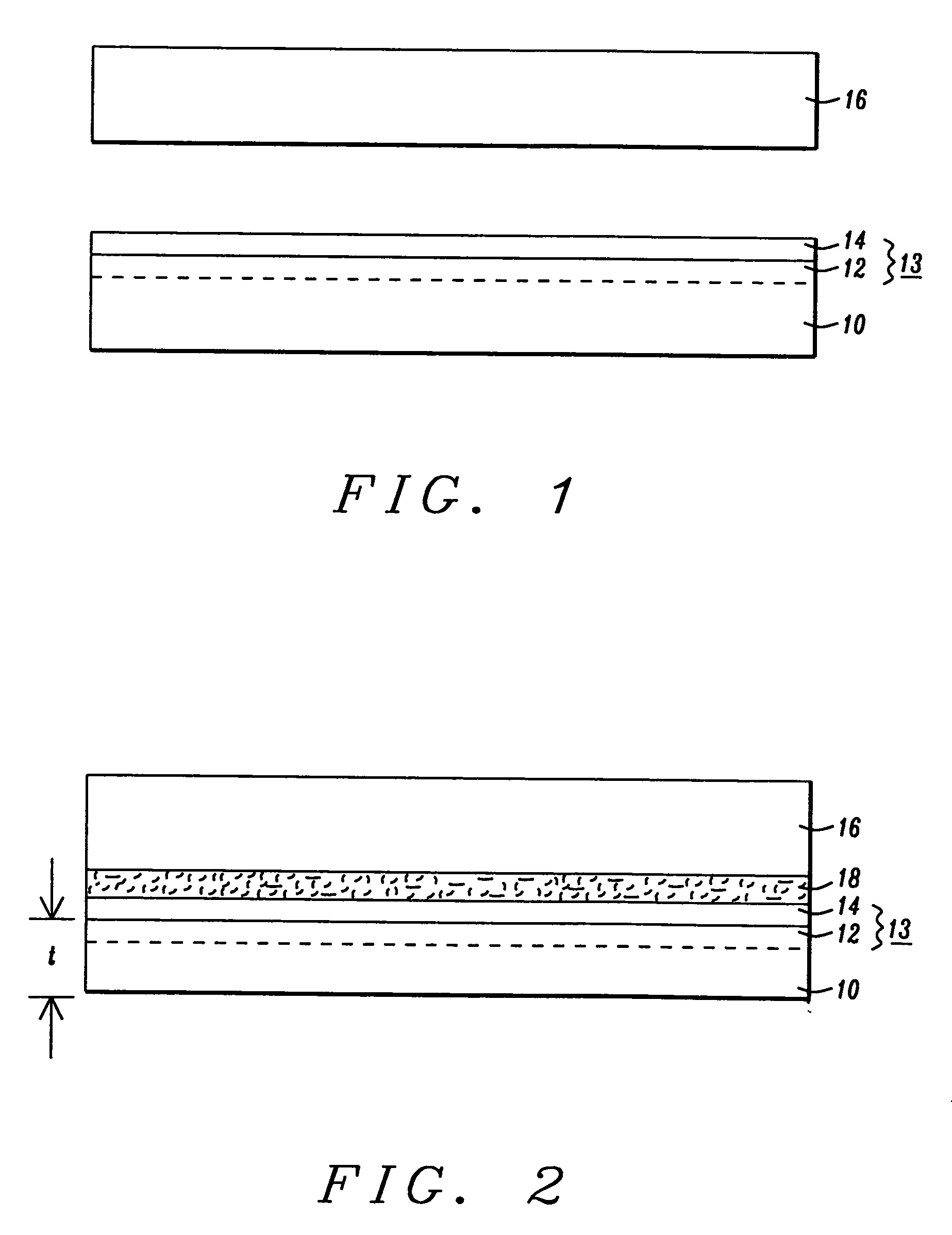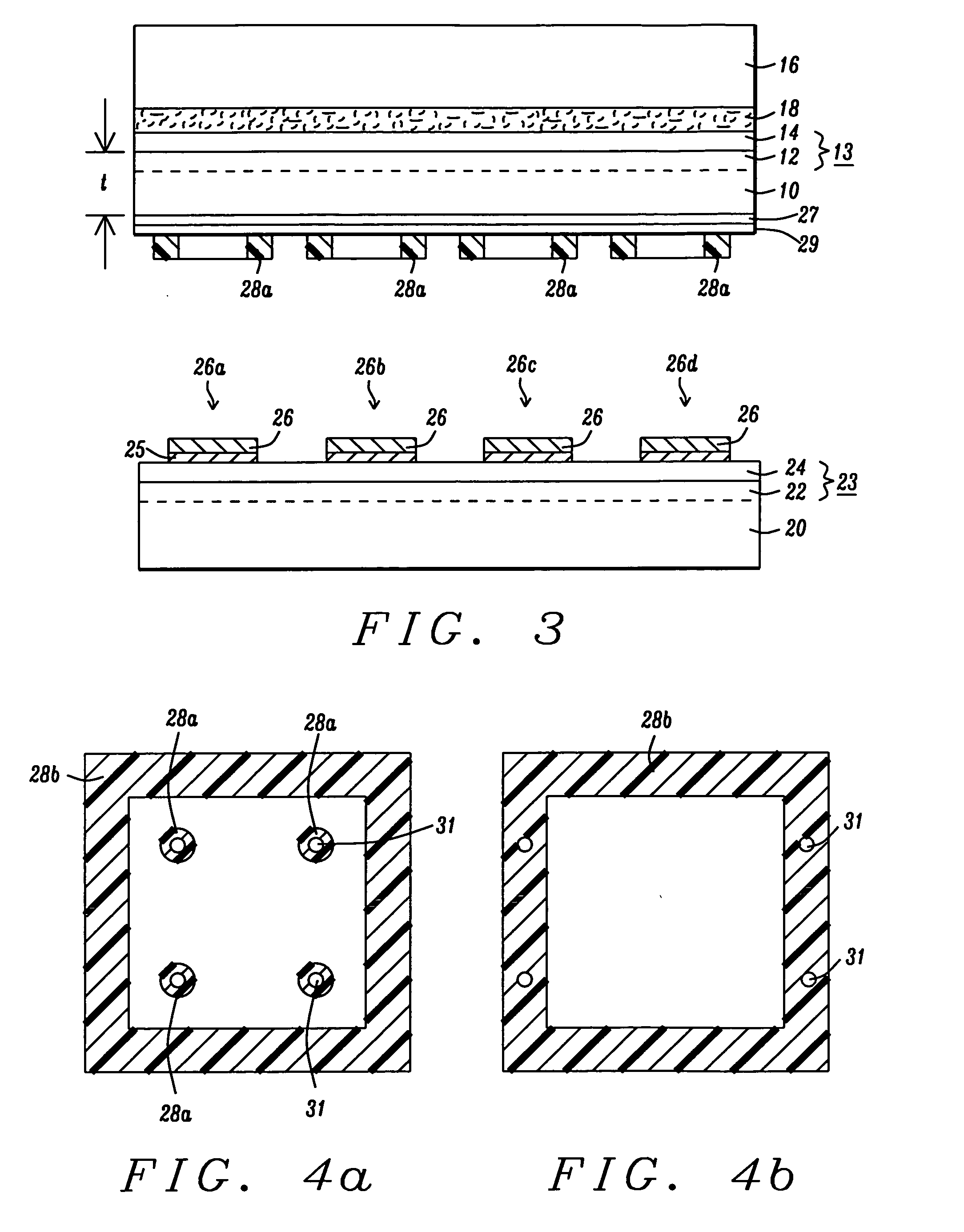Method of stacking thin substrates by transfer bonding
- Summary
- Abstract
- Description
- Claims
- Application Information
AI Technical Summary
Benefits of technology
Problems solved by technology
Method used
Image
Examples
first embodiment
[0029] In a first embodiment of this invention a stack of three interconnected integrated circuit layers is formed consisting of two thin silicon integrated circuit layers formed on a third integrated circuit layer, the later being formed on a conventional silicon wafer substrate. The embodiment illustrates not only the method forming and transfer bonding of multiple thin semiconductor device layers to create three dimensional integrated circuit chips but also the application of the method to interconnect devices on adjacent layers, non-adjacent layers, and multiple layers.
Formation of a First and Second Integrated Circuit layers
[0030] Referring to FIG. 1, a first silicon wafer 10 is prepared by conventional processing. Semiconductive devices are formed within the top surface 12 of the wafer 10 and a personalization layer 14 consisting of a plurality of wiring levels interleaved with ILD (interlevel dielectric) layers and interconnected with conductive contacts and vias are forme...
second embodiment
[0052] In a second embodiment of this invention a stack of three interconnected integrated circuit layers is formed consisting of two thin silicon integrated circuit layers formed on a third integrated circuit layer, the later being formed on a conventional silicon wafer substrate. The second embodiment is an alternative to the first embodiment supra and is identical to the first embodiment except that the blanket resin adhesive layer which is used to bind the thinned integrated circuit layers is not patterned after the layer is deposited. Instead, the entire adhesive layer is used to bond the integrated circuit layers together. Later, when the deep pass through openings are formed in the uppermost stacked integrated circuit layer the anisotropic etching process is extended to remove the resin layer at the base of the opening. The second embodiment is identical to the first embodiment up to the point where the handler mounted first wafer 10 has been thinned as illustrated in FIG. 2....
third embodiment
[0064] In a third embodiment of this invention a stack of two interconnected integrated circuit layers is formed by first bonding two silicon wafers and then thinning one of the two wafers, thereby eliminating the need for temporary bonding to a separate handler. The first wafer is a blank unprocessed wafer and the second wafer has an integrated circuit layer comprising a masterslice layer consisting of active and passive silicon devices and a personalization layer comprising wiring circuitry terminating in bond pads on a top passivation layer. In addition, the embodiment also illustrates how a multilayer integrated circuit package can be prepared for dicing during stack formation.
[0065] Referring to FIG. 17 a first un-processed blank silicon wafer 210, is provided. An insulative layer 227, preferably silicon oxide between about 500 and 1000 nm thick, and a barrier / passivation layer 229, preferably silicon nitride, between about 50 and 100 nm thick are sequentially deposited on the...
PUM
 Login to View More
Login to View More Abstract
Description
Claims
Application Information
 Login to View More
Login to View More - R&D
- Intellectual Property
- Life Sciences
- Materials
- Tech Scout
- Unparalleled Data Quality
- Higher Quality Content
- 60% Fewer Hallucinations
Browse by: Latest US Patents, China's latest patents, Technical Efficacy Thesaurus, Application Domain, Technology Topic, Popular Technical Reports.
© 2025 PatSnap. All rights reserved.Legal|Privacy policy|Modern Slavery Act Transparency Statement|Sitemap|About US| Contact US: help@patsnap.com



